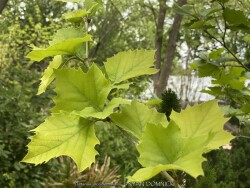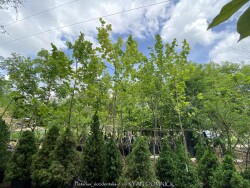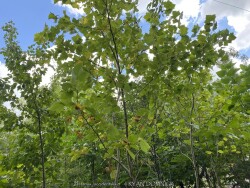



Plant Min Zone: 4a
Plant Max Zone: 9b
Sunlight: All Day Full Sun, Full Sun, Part Sun
Water / Rainfall: Average, High
Soil Quality: Poor, Average, Rich
Bloom Season: Insignificant
Flower Color: Insignificant
Berry / Fruit Color: Brown-Beige
Spring Foliage Color: Green
Summer Foliage Color: Green
Fall Foliage Color: Yellowish Green
Evergreen Foliage: No
Winter Interest: Yes
Scented Flowers: No
Drought Tolerance: Medium
Wet-Feet Tolerance: High
Humidity Tolerance: Medium, High
Wind Tolerance: Medium, High
Poor Soil Tolerance: Clay Soils, Rocky Soils, Sandy Soils, Alkaline Soils (high PH)
Height: 60' - 90'
Width: 50' - 75'
Growth Rate: Fast, Extremely Fast
Service Life: Tree: Service life varies
Maintenance Need: Medium
Spreading Potential: N.A.
Yearly Trimming Tips: Tree: No Trimming Needed / Trim as Needed When Mature / Lower Branches.
Plant Grouping Size: Specimen Planting of 1-3
Best Side of House: Large Tree; Best in Open Areas
Extreme Planting Locations: None
Ornamental Features: Rot Resistant / Strong Wood Tree, Bright Winter Color
Special Landscape Uses: Erosion Control, Naturalizing
Possible Pest Problems: Occasional Problems, Disease
Plant Limitations: Messy; Fruits / Twigs / Leaf Litter, Shallow Roots May Cause Problems
Shippable in 2026: YES
American sycamore tree (Plantanus occidentalis) is a beautiful large shade tree native to the eastern half of the United States along river banks, floodplains, and rich wooded areas. It is very easy to spot out a sycamore tree in the forest due to its attractive white peeling bark on older trees. The branching pattern is very picturesque with well shaped "U" branch intersections. The wood is coarse grained and twisted making it resistant to storm damage along with the branch angles. As a result, this tree can grow to enormous proportions. Sycamores tolerate a wide range of growing conditions but prefer moist rich deep soil and floodplains. Drought is tolerated but with a slower growth rate, otherwise growth rate is very rapid. Sycamore anthracnose is a problem during wet cold spring like weather causing trees to sustain twig and leaf damage and fill out very slowly. They almost always outgrow this by June as the weather heats up but can be an issue in the Northern part of the country. Although it's beauty is unmatched, sycamores can be messy at certain times of the year, dropping twigs, seed balls, bark strips, and large leaves. But no tree is perfect right? Sometimes Sycamore is grown for timber production. The wood is highly prized by woodworkers for it's beautiful lustrous texture when polished. Sycamore is best used if you need a decent shade tree in under 10 years but with plenty of room to mature into a large shade tree for future generations. Several improved cultivars now exist.